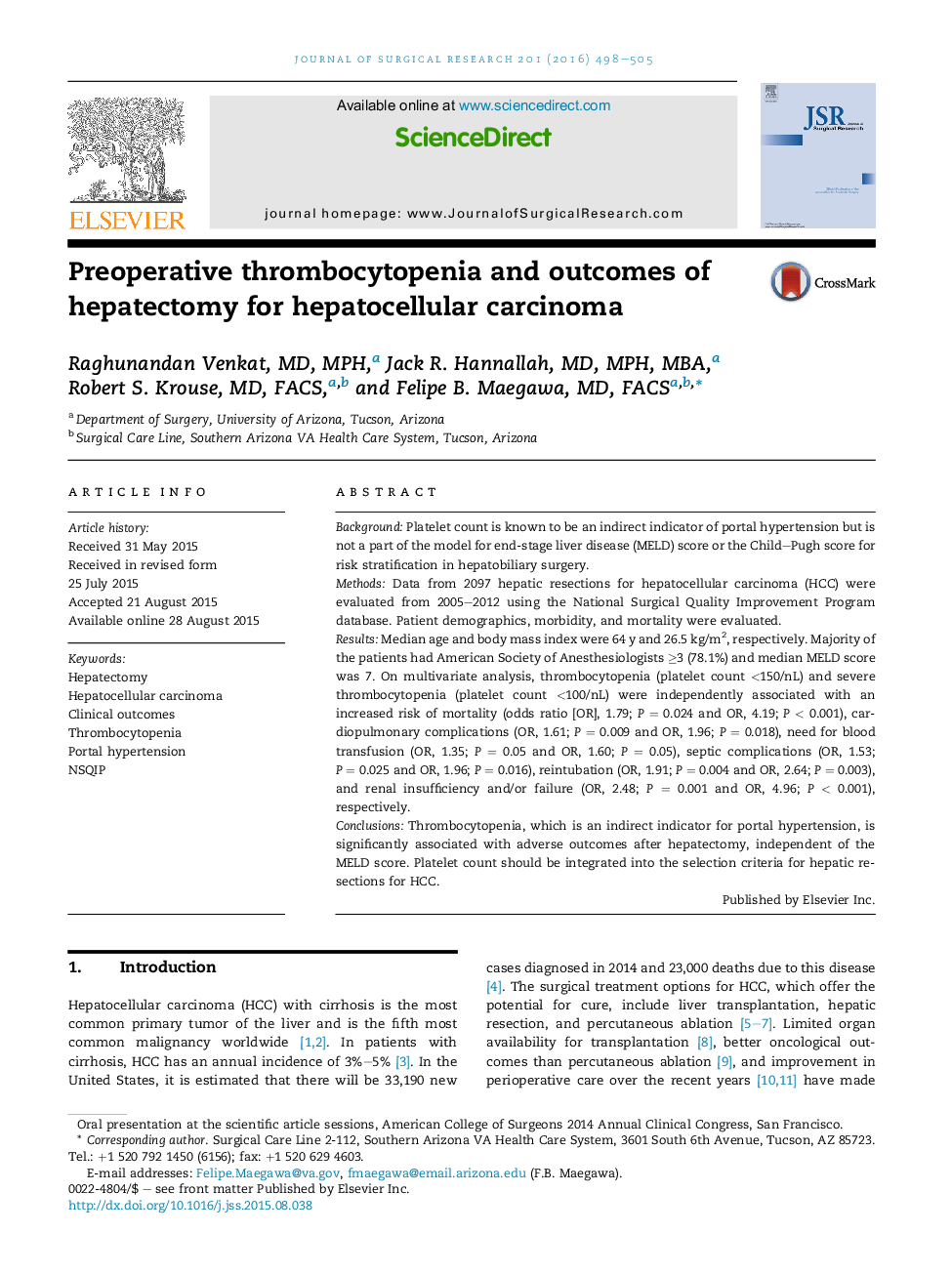| Article ID | Journal | Published Year | Pages | File Type |
|---|---|---|---|---|
| 4299392 | Journal of Surgical Research | 2016 | 8 Pages |
BackgroundPlatelet count is known to be an indirect indicator of portal hypertension but is not a part of the model for end-stage liver disease (MELD) score or the Child–Pugh score for risk stratification in hepatobiliary surgery.MethodsData from 2097 hepatic resections for hepatocellular carcinoma (HCC) were evaluated from 2005–2012 using the National Surgical Quality Improvement Program database. Patient demographics, morbidity, and mortality were evaluated.ResultsMedian age and body mass index were 64 y and 26.5 kg/m2, respectively. Majority of the patients had American Society of Anesthesiologists ≥3 (78.1%) and median MELD score was 7. On multivariate analysis, thrombocytopenia (platelet count <150/nL) and severe thrombocytopenia (platelet count <100/nL) were independently associated with an increased risk of mortality (odds ratio [OR], 1.79; P = 0.024 and OR, 4.19; P < 0.001), cardiopulmonary complications (OR, 1.61; P = 0.009 and OR, 1.96; P = 0.018), need for blood transfusion (OR, 1.35; P = 0.05 and OR, 1.60; P = 0.05), septic complications (OR, 1.53; P = 0.025 and OR, 1.96; P = 0.016), reintubation (OR, 1.91; P = 0.004 and OR, 2.64; P = 0.003), and renal insufficiency and/or failure (OR, 2.48; P = 0.001 and OR, 4.96; P < 0.001), respectively.ConclusionsThrombocytopenia, which is an indirect indicator for portal hypertension, is significantly associated with adverse outcomes after hepatectomy, independent of the MELD score. Platelet count should be integrated into the selection criteria for hepatic resections for HCC.
